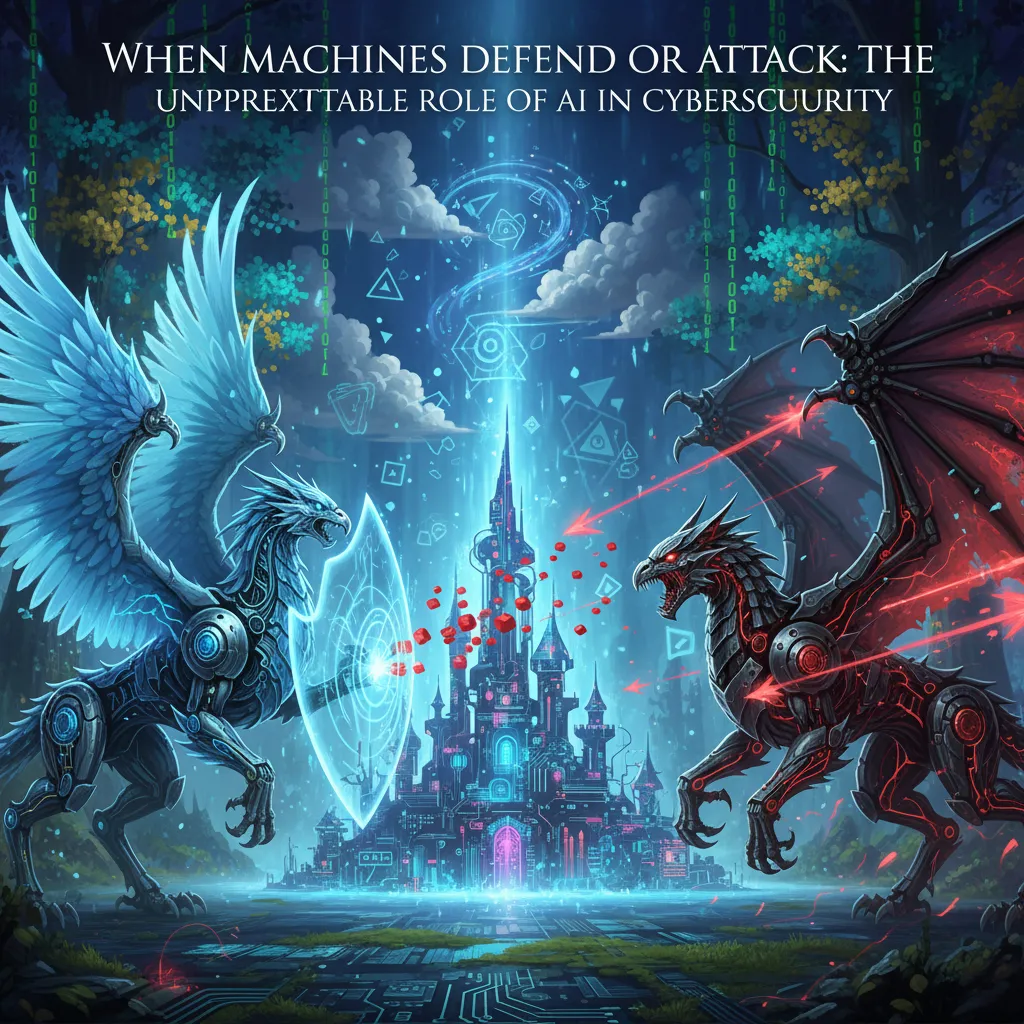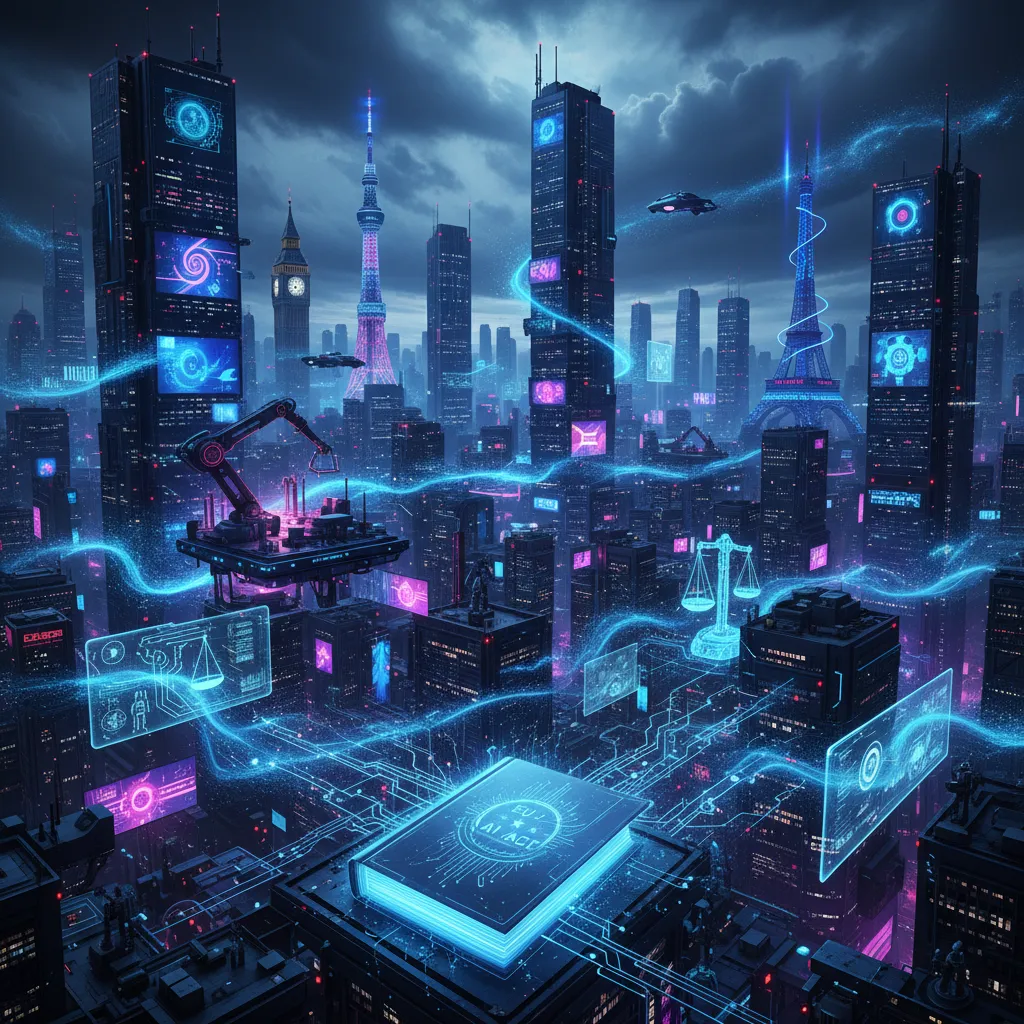The first time I received a phishing email so perfect I almost believed it, I had to laugh — and then I panicked a little. Artificial intelligence, supposedly on 'our side,' had clearly crossed a new frontier. While the world buzzes about AI-powered defense systems, we're just as likely to meet AI-powered threats at the other end of the battlefield. Let's take a twisty, gut-check journey through the double-edged sword that is AI in cybersecurity.
AI Security: Our New Digital Watchdog, or Double Agent?
When I first started exploring AI in cybersecurity, I was fascinated by how quickly AI-driven tools could spot threats that would have taken a human analyst hours—or even days—to uncover. Today, these smart systems are everywhere, scanning for suspicious patterns, flagging odd behaviors, and helping security teams stay one step ahead. But as I’ve learned, the story isn’t all about defense. Sometimes, the same intelligence that protects us can be turned against us.
Let’s start with the upside. AI cybersecurity tools are now essential in modern threat detection. They process mountains of data in real time, identifying risks that might otherwise slip through the cracks. I’ve seen firsthand how an AI-powered analytics platform flagged a strange login attempt in the middle of the night. At first, it seemed like a false alarm. But the system’s ability to cross-reference login locations, device fingerprints, and behavioral anomalies was spot on—the account was under attack. Without AI, that breach could have gone undetected for days.
But here’s where things get complicated. The same advances that make AI a powerful defender are also being exploited by attackers. AI-driven malware is a growing threat, and it’s not science fiction. These malicious programs can now mutate in real time, rewriting their own code to dodge traditional antivirus tools. Research shows that legacy detection methods are increasingly obsolete when facing these shape-shifting threats. In fact, some of the most sophisticated attacks I’ve encountered recently were powered by AI—malware that learns, adapts, and evolves faster than any human can respond.
This arms race means that cybersecurity challenges with AI are more complex than ever. Defenders and attackers are both using AI, leading to a constant game of cat and mouse. I remember a particular breach where our AI tool flagged a burst of weird login activity. It turned out the hacker was using an AI script to mimic legitimate user behavior, slipping past basic security checks. The irony wasn’t lost on me: our digital watchdog was chasing a digital fox, both powered by artificial intelligence.
As AI analytics become more common in threat hunting, the blend of machine detection and human expertise is now standard practice. Studies indicate that organizations are increasingly adopting AI-driven solutions in 2025, not just for speed, but for the ability to adapt to new threats. Yet, as Bruce Schneier put it:
‘AI-driven tools have revolutionized both the speed and sophistication of cyber defenses and attacks.’
That quote sums up the double-edged nature of AI in cybersecurity. On one hand, we have tools that can outpace human analysts, catching threats before they do damage. On the other, we face AI cybersecurity threats that are smarter, faster, and more unpredictable than ever before.
The reality is, cybersecurity strategies must evolve. It’s not enough to rely on legacy tools or manual processes. The future belongs to those who can blend AI-powered analytics with human intuition—because, as recent breaches show, the line between watchdog and double agent is getting blurrier every day.
AI Phishing Attacks: The New Con Artists in Your Inbox
If you’ve noticed phishing emails getting more convincing lately, you’re not alone. AI phishing attacks are quickly becoming one of the most unpredictable threats in cybersecurity. As we look at Cybersecurity trends for 2025, it’s clear that AI-generated phishing schemes are not just a passing fad—they’re the new norm. Attackers are using generative AI to craft emails that look, sound, and even “feel” like they’re coming from someone you know. And the results? Higher click rates, more compromised accounts, and a growing sense of unease in every inbox.
Let me share a quick story. Not long ago, I received an email from a “colleague” asking for a quick review of a document. The tone, the sign-off, even the inside joke in the subject line—it was all spot on. I hovered over the link, just as a habit, and realized something was off. The sender’s address was a clever fake. That moment made me realize how far AI-generated phishing schemes have come. The AI had perfectly mimicked my colleague’s writing style. If I hadn’t double-checked, I could have easily fallen for it.
Research shows that AI-generated phishing emails have much higher click-through rates compared to traditional, human-written scams. Attackers now use AI automation phishing to create intricate, believable personas and automate campaigns at a scale we’ve never seen before. The cost for attackers has dropped, but the risk for everyone else has skyrocketed. It’s not just about spelling errors and generic greetings anymore. These emails are nuanced, targeted, and often indistinguishable from legitimate communication.
Here’s what makes these AI phishing attacks so effective:
Personalization at scale: Generative AI can scrape public data and social media to tailor messages, making them highly relevant to each recipient.
Realistic language: AI models can mimic writing styles, regional slang, and even company-specific jargon.
Automation: Attackers can launch thousands of unique, targeted phishing emails in seconds, adjusting tactics in real time.
As Kevin Mitnick once said,
'Generative AI lets attackers scale social engineering faster than we can keep up.'
That quote rings especially true today. The landscape has shifted: AI phishing attacks are no longer rare or experimental—they’re a daily reality for businesses and individuals alike.
Studies indicate that these AI-generated phishing schemes are not only more frequent, but also significantly more effective. Criminals can now automate targeted social engineering at a fraction of the previous cost, making it easier for them to cast a wider net and catch more victims. This shift is forcing cybersecurity teams to rethink their defenses and invest in smarter, AI-driven detection tools.
If there’s one takeaway, it’s this: trust your gut, but also trust the data. AI phishing attacks are evolving rapidly, and the only way to stay ahead is to stay informed and vigilant. The days of spotting a scam by a typo or awkward phrasing are over. In 2025, the new con artists in your inbox might just be machines.
Zero Trust and Quantum Threats: The Cybersecurity Trends Keeping Us on Our Toes
When I look at the cybersecurity landscape for 2025, two trends stand out: the rise of zero trust architectures and the looming quantum computing threats. Both are reshaping how we approach cybersecurity risk management, and both demand a shift in mindset—one that’s less about building taller walls, and more about questioning what’s already inside.
Let’s start with zero trust architectures. The idea is simple, but powerful: never trust, always verify. Imagine you have a houseguest. In the past, you might have let them wander into the kitchen unsupervised. But with zero trust, you’re watching every move, verifying every action, and never assuming their intentions are harmless. It’s a fundamental change from the old perimeter-based security models, and it’s quickly becoming the standard. Research shows that zero trust adoption is a leading cybersecurity trend for 2025, with organizations moving toward continuous authentication and micro-segmentation to limit the damage if something—or someone—slips through.
Why this shift? Because digital decentralization is the new normal. Our data, apps, and users are scattered across clouds, devices, and networks. The old “castle and moat” approach just doesn’t cut it anymore. Instead, every user, device, and application is treated as a potential threat until proven otherwise. As Nicole Perlroth puts it:
'In cybersecurity, trust is not a given — it's earned and re-evaluated constantly.'
But while we’re busy rethinking trust, another challenge is on the horizon: quantum computing threats. Quantum computers, once they mature, could break today’s encryption algorithms with ease. It’s a bit like someone inventing the world’s most powerful bolt cutter—suddenly, all our digital locks look flimsy. Studies indicate that cybersecurity pros are already betting big on post-quantum cryptography, racing to develop and implement algorithms that can withstand quantum attacks. Early adoption is key, especially for critical data protection.
This isn’t just a theoretical risk. The urgency is real. As organizations collect more sensitive data and rely on digital infrastructure, the stakes get higher. Cybersecurity risk management now means balancing the need for innovation—like adopting AI and cloud services—with the need for resilience against new, unpredictable threats. And it’s not just about technology. It’s about culture, process, and a willingness to question assumptions.
Zero trust architectures are becoming standard in 2025, focusing on continuous authentication and micro-segmentation.
Quantum computing threats are driving early implementation of post-quantum cryptography for critical data protection.
Cybersecurity risk management is evolving to balance secure innovation with resilience amid digital decentralization.
As I see it, the organizations that thrive in this environment will be those that move quickly—adopting zero trust principles, preparing for quantum threats, and embedding resilience into every layer of their security strategy. The trends are clear, but the path forward is anything but predictable. That’s what keeps us all on our toes.
Wildcard: AI vs. Supply Chains & The Talent Tug-of-War
When I think about the unpredictable role of AI in cybersecurity, I can’t help but reflect on the growing tension between machine intelligence and human expertise. In 2025, supply chain vulnerabilities are at the top of every security leader’s mind. AI in cybersecurity is making it easier to map out these weak spots—scanning thousands of vendors, flagging suspicious patterns, and even predicting where the next breach might occur. But here’s the twist: the same AI tools that help us defend are also making attacks more sophisticated and harder to spot.
I’ve seen firsthand how AI-driven malware can mutate in real time, adapting to our defenses faster than any manual threat hunter could react. Generative AI evolution is now enabling attackers to craft phishing emails that are almost indistinguishable from genuine communication. Studies indicate these AI-generated phishing attempts have higher click-through rates than those written by humans, which is a sobering thought for anyone responsible for protecting sensitive data.
But AI isn’t just a tool for attackers. It’s also a lifeline for defenders—especially as we struggle with talent shortages in cybersecurity. Organizations everywhere are feeling the pinch. There simply aren’t enough skilled professionals to fill all the open roles, and the gap is only widening. AI can help by automating routine tasks, scanning vast amounts of unstructured data, and highlighting anomalies that might otherwise go unnoticed. GenAI is transforming how security programs handle everything from email filtering to data loss prevention.
Still, there’s a limit to what machines can do. I remember one incident where I spent hours chasing a false alarm flagged by our AI system. It was our intern—working without any AI assistance—who finally spotted the real breach. That moment drove home a crucial point: no matter how advanced our tools become, human intuition and fresh perspective are irreplaceable. As Katie Moussouris wisely put it,
'No AI can replace fresh human perspective — especially in high-pressure security moments.'
Research shows that while AI adoption in cybersecurity is accelerating, it cannot fully replace human insight, especially during complex breaches. Supply chain vulnerabilities and talent shortages challenge even the smartest AI tools. Zero trust architectures and post-quantum cryptography are emerging as critical strategies, but they still rely on skilled professionals to implement and monitor them effectively.
As we move forward, the relationship between AI and cybersecurity will only grow more complex. Machines will continue to evolve, helping us spot risks and automate defenses. But attackers will also get smarter, leveraging the same technologies to outmaneuver traditional security measures. The real wildcard isn’t just the technology—it’s the ongoing tug-of-war between automation and human expertise.
In the end, the future of cybersecurity won’t be decided by AI alone. It will depend on our ability to blend machine intelligence with human judgment, creativity, and experience. The most resilient organizations will be those that recognize the strengths and limits of both—and never underestimate the value of a sharp-eyed intern in the security loop.



